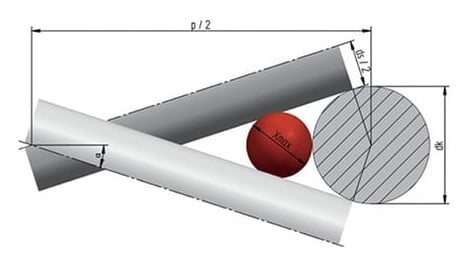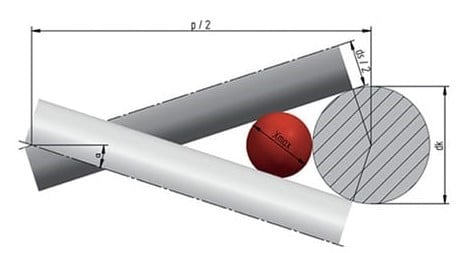What Is a Wire Mesh Glass Bead Test? (Definition and Procedure)
If you have ever worked with woven wire mesh, you know that it is a versatile material that comes in several different weave patterns. These weave patterns are created to deliver unique performance qualities, whether it's heightened throughput, increased accuracy, etc.
Now, things can become daunting for floor engineers when they are left with the task of determining the best weave pattern and specifications for the needs of their operation. Doing so sometimes requires the performance of the wire mesh to be verified using methods, such as a glass bead test.
As W.S. Tyler has been a prominent manufacturer of wire mesh components for over 150 years, we have come to understand that, above all else, you seek to verify the promises suppliers make regarding the performance of their mesh.
With that, to help you better understand the ins and outs of a glass bead test and build trust in your mesh, this article will take a deep dive into the following:
- What a glass bead test is
- What a glass bead test will tell you about your mesh
- How a glass bead test is conducted
- How W.S. Tyler handles glass bead testing
What Is a Glass Bead Test?

Glass bead testing is a method of testing the cut point and nominal mesh designation of woven wire mesh. Glass microspheres are used to identify the largest size spheres that will pass through the mesh.
The spheres used are certified on NIST (National Institute of Standards and Technology) traceable and certified electroformed sieves designed to determine the size and sphericity of the beads.
For more information regarding the importance of the nominal designation of your woven wire mesh, read the following article:
Why Is a Glass Bead Test Necessary?
Woven wire mesh is available in dozens of weave patterns with varying specifications. To implement a mesh that will best accommodate your needs, you must ensure the specification will screen the necessary particle size range.
A properly conducted glass bead test provides insight into the largest particle size a given mesh specification allows to pass through.
How Is a Glass Bead Test Conducted?
To perform a glass bead test, the mesh specification being tested is first fitted into a test sieve frame. The glass spheres are then weighed and placed on the sieve, which gets transferred to a sieve shaker, air jet sieve, or sonic sifter separator.
At this point, an end of sieving analysis is conducted to determine how long the glass beads should be tested. The glass beads are then run, and the retained material will be re-weighed.
The amount of beads that pass through the mesh is compared to a calibration graph to determine the nominal mesh designation.
Does W.S. Tyler Glass Bead Test Wire Mesh?
Not every mesh specification provided by W.S. Tyler is glass bead certified. However, when a specification is glass bead tested, it is not done in-house.
Instead, we rely on trusted third-party organizations, such as Whitehouse Scientific, to conduct any necessary glass bead testing.
For this reason, we recommend that you inform us if any sort of NIST traceable certification is required in advance so that we can acquire a suitable wire mesh solution.
Implement the Right Testing Method To Achieve Peak Wire Mesh Performance
A glass bead test is a wire mesh integrity test that involves using standardized glass beads to determine the cut point and nominal designation of a particular wire mesh specification. This, in turn, gives you a better idea of the largest particle size your mesh will allow to pass through when introduced to your operation.
Now, in order to ensure your wire mesh specification performs as intended, you must gain an understanding of other integrity testing methods, such as a bubble point test. This knowledge will better equip you to implement the right testing methods, which will translate to superior wire mesh performance.
For over 150 years, W.S. Tyler has helped customers determine if and how woven wire mesh can benefit their operation and is here to leverage these years of experience to help you build trust in your mesh.
To that end, read the following article and learn everything you need to know about bubble point testing and how it compares to glass bead testing:
About Sam Badger
Sam has been a part of the W.S. Tyler family for three years and is currently a sales manager, overseeing our fabricated parts and customized filters. To help deliver best-in-class solutions, Sam works to bridge the gap between customers, both new and existing, and our engineering team. Additionally, Sam provides on-site servicing of the ALPINE Air Jet Sieve e200 LS, striving to learn your particle analysis operation to resolve any issues you encounter and ensure your equipment continues to produce accurate and repeatable results.



